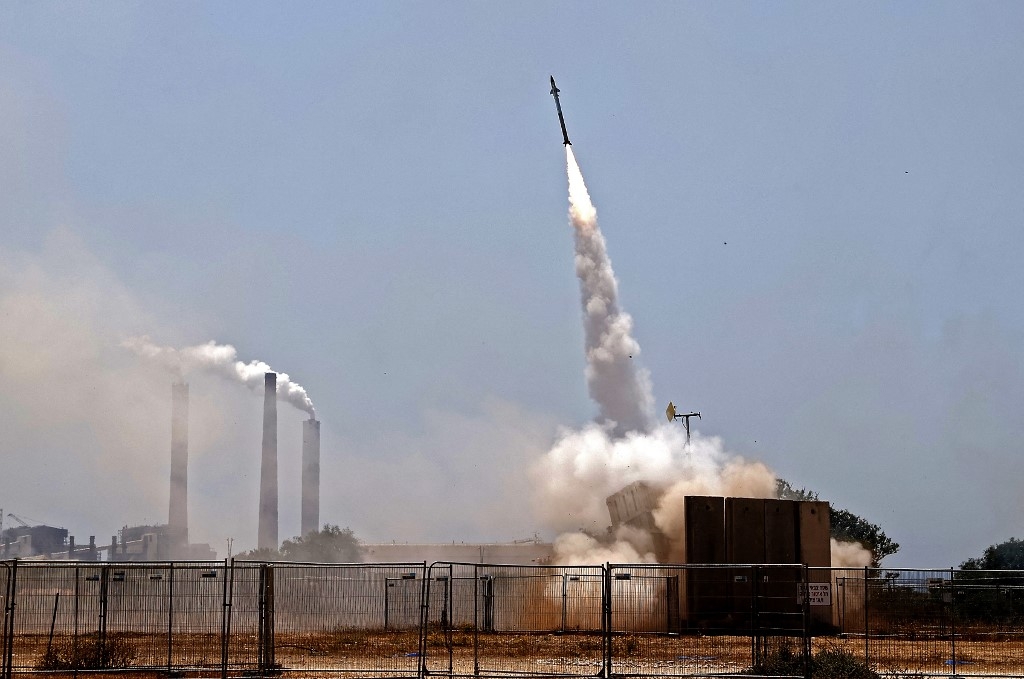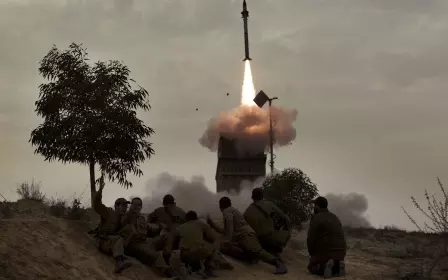US military tests Israel's Iron Dome system on American soil

The United States military conducted its first domestic test of the Iron Dome anti-missile system earlier this year, Israel's Defence ministry announced on Monday.
The ministry said in a statement that the series of tests, in which US soldiers shot down targets, was the "first firing attempt with an Iron Dome battery in the United States, operated by US Army soldiers".
Originally designed to intercept rockets, the Iron Dome has since been upgraded and improved to allow it to also shoot down mortar shells, unmanned aerial vehicles and cruise missiles.
Under a 2019 agreement, Israel sold two Iron Dome batteries to Washington, the first being delivered in late 2020 and the second in January 2021.
New MEE newsletter: Jerusalem Dispatch
Sign up to get the latest insights and analysis on Israel-Palestine, alongside Turkey Unpacked and other MEE newsletters
Less than a month after the delivery of the second battery, Haaretz reported that Israel had allowed the US to deploy the Iron Dome system at unknown bases in the Arabian Gulf.
But in March, the US army said it was reconsidering plans to buy additional Iron Dome systems because they could not be integrated into American-made air defences.
"It took us longer to acquire those [first] two batteries than we would have liked," US General Mike Murray, commander of Army Futures Command, told the House Armed Services Tactical Air and Land Forces Subcommittee.
"We believe we cannot integrate them into our air-defense system based upon some interoperability challenges, some cyber[security] challenges and some other challenges," he was quoted in the Jerusalem Post as saying.
"So what we ended up having is two stand-alone batteries that will be very capable, but they cannot be integrated."
The Iron Dome was developed by the defence company Rafael. It is mainly deployed in Israel to fire and intercept missiles and rockets launched from the Gaza Strip towards Israeli settlements. But it is also deployed at the borders with Lebanon and Syria, at the occupied Golan Heights in the north.
Middle East Eye delivers independent and unrivalled coverage and analysis of the Middle East, North Africa and beyond. To learn more about republishing this content and the associated fees, please fill out this form. More about MEE can be found here.




